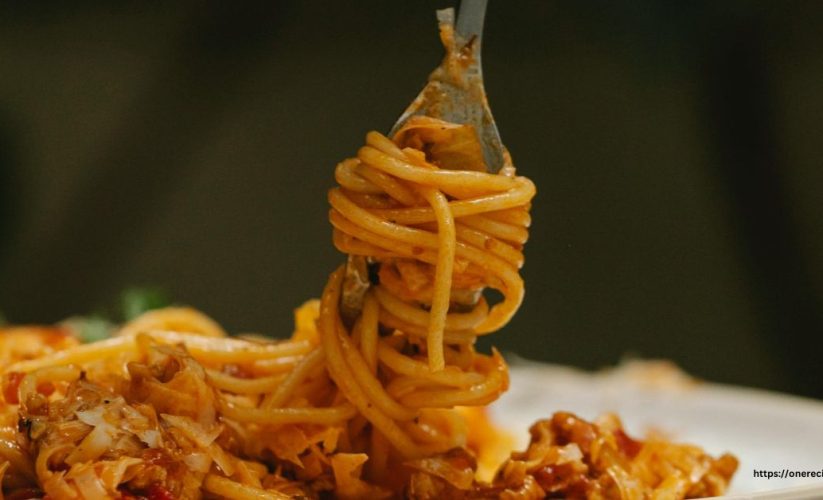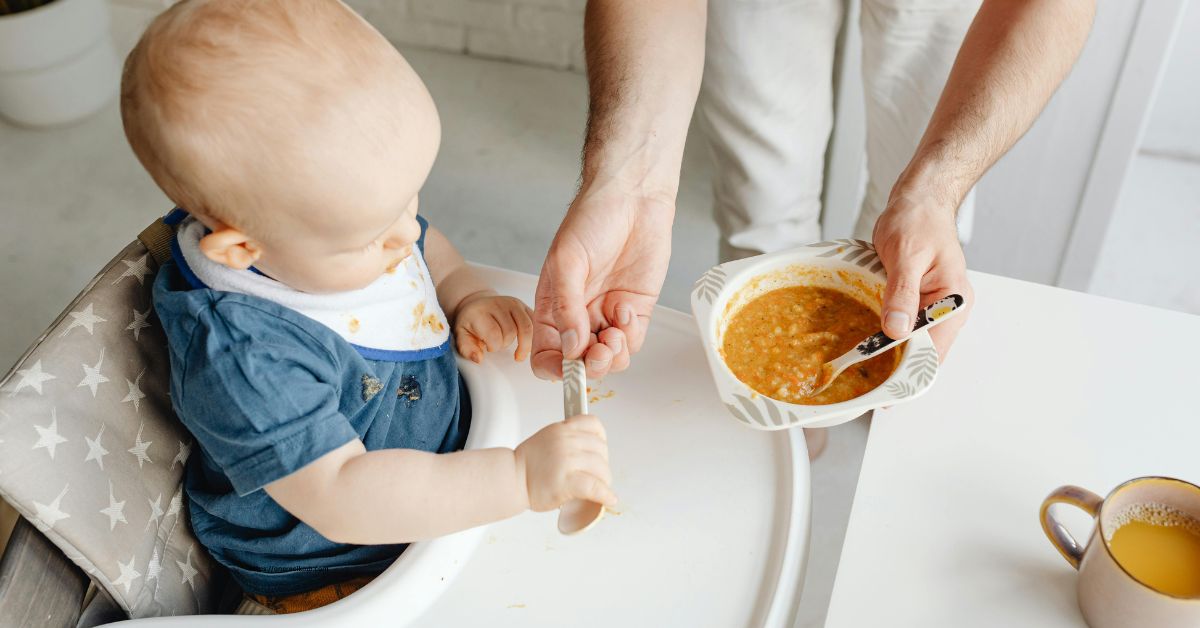
Homemade Baby Food Recipes For 6-9 Months Old Babies
One of the best ways to provide Homemade Baby Food Recipes for 6-9 months old babies with fresh, healthy meals free from additives is by introducing homemade baby food. This stage will help your baby develop a taste for a variety of flavors and textures, which will help him or her to develop healthier eating habits. Some uncomplicated recipes such as sweet potato mash, banana and avocado puree, and chicken with vegetables give your baby all the essential nutrients that he or she needs. You can make homemade baby food that has all the right ingredients resulting in tasty meals for your child.
Benefits of Homemade Baby Food Recipes For 6-9 Months
Discussed the Benefits of Homemade Baby Food Recipes:
Control of Nutrition
Total control of the ingredients you use means that your baby can consume fresh, good-quality food without any unnecessary additives or preservatives.
Economical
In most cases, homemade baby food is cheaper than the one in store. You could buy vegetables in bulk or simply make use of seasonal produce to save on costs.
Tailor-Made
Gradual introduction of new flavours and textures is possible if one modifies recipes for his or her child’s specific preferences and dietary requirements.
Less Wastage
To take advantage of the fact that only a needed quantity can be prepared, reducing waste, parents should consider making their own babies’ meals at home.
6-9 Months Old Babies Essential Nutrients
Most important for them are the nutrients they get from their foods, such as:
Iron: It supports brain development and is found in meat, fish, beans and fortified cereals.
Calcium: Found in dairy products, leafy greens and fortified foods. It results to bone formation.
Vitamin A: Carrots, spinach sweet potatoes have it which helps with vision preservation and maintaining a healthy immune system function.
Vitamin C: Know that your baby requires iron absorption as well as an improved immune system, hence eat food rich in vitamin C like bell peppers, citrus fruits and strawberries.
Proteins: A key nutrient that aids growth; found in meats milk products and beans, among others.
Signs Your Infant Is Ready For Solid Foods
You would look out for these indications before introducing solid foods:
Ability to Sit Unassisted – The baby should be able to sit up with minimal support.
Interest In Food – The child has interest about what you are eating.
Tongue Thrusting Reflex Dissipation – The baby can move the food from front to back of her/his mouth.
Strong Neck Muscles – The infant holds its head up without wobbling.
Safety Tips When Preparing Baby Food-
Cleanliness: Prior to making baby food, make sure that your hands, cooking utensils and surfaces are clean.
Cook It: To kill any bacteria while preparing the food, it is best to cook it well. For maintaining the nutrient content, steaming or boiling could be used.
Smoothening: Ensure that food is properly pureed so as to avoid choking. As your child grows, you may want to gradually introduce more textured foods.
Storing: Airtight containers must be used for storing homemade infant meals. Refrigerate for up to two days of freezing.
Getting Started With First Foods-
However, these should only consist of one ingredient purees since they help in identifying if a baby has any allergies or not; some examples include fruits such as:
First Vegetables: Carrots sweet potatoes peas butternut squash, etc.
Fruits: Apples bananas pears peaches, etc.
Grains: Rice cereal, oatmeal.
Single-Ingredient Purees-
1. Carrot Puree
Ingredients:
2-3 carrots, peeled and chopped
Instructions:
- Steam the carrots until they become tender.
- Blend with a little water or breast milk to obtain the consistency desired.
2. Apple Puree
Ingredients:
2 apples, peeled, cored and chopped
Instructions:
- Steam the apples till soft.
- To make it smooth puree add some more water if needed.
3. Banana Puree
Ingredients:
1 ripe banana
Instructions:
- Peel and mash the banana with a fork till smooth.
- Combination Purees
4. Sweet Potato and Apple Puree
Ingredients:
- 1 sweet potato, peeled and chopped.
- 1 apple, peeled, cored, and chopped
Instructions:
- Steam together the sweet potato and apple until cooked.
- Blend them all together until smooth adding water or breast milk if required.
5. Pea and Pear Puree
Ingredients:
- 1 cup peas (fresh or frozen)
- 1 pear, peeled, cored, and chopped.
Instructions:
- If possible, steam the peas until soft, as well as pears for some time before you make them into a puree.
- Puree them all together to make it smooth.
6. Carrot and Lentil Puree
Ingredients:
- 1 cup cooked lentils,
- 2 carrots peeled, sliced lengthwise into 3 inch pieces.
Instruction:
- Let steam over boiling water until tender. This is when these carrots can be eaten through this method of cooking.
- Blend these two vegetables in order to get an even texture by adding some of your breast milk or water to loosen up that mixture.
Textured Foods and Finger Foods
As your baby gets older and more comfortable with purees, you can introduce more textured foods and finger foods.
7. Mashed Avocado
Ingredients:
- 1 ripe avocado
- 1 ripe banana
Instructions:
Mash avocados together with bananas till its texture becomes creamy. This should be done immediately after making it so that it doesn’t lose its original taste.
8. Vegetables and mashed lentils
Ingredients:
- A cup of cooked lentils
- A small potato, peeled and diced one carrot
Instructions:
- Boil lentils, carrots, and potatoes and tenderize them.
- Blend properly as water or broth is added for the required consistency.
9. Oatmeal with Fruits
Ingredients:
- 1/2 cups oats
- 1 cup of water or milk
- 1/2 banana or 1/4 cup berries (optional)
Instructions:
- Follow the cooking instructions on the label for cooking the oats in water or milk.
- Add bananas or berries and mix them well.
Storage and Serving Tips Baby Food Recipes For 6-9 Months Old Babies
Refrigeration: Pureed baby food must be stored in containers that do not let air in for more than 48 hours.
Freezing: Freeze puree into tiny blocks by using ice cube trays. When frozen, put in a freezer bag and write the date on it.
Defrosting: Put in the fridge or immerse in warm water to defrost. Avoid using microwaves since this leads to uneven heating.
Introducing Allergens
When you introduce new foods, use this rule, which also helps you identify any allergic reactions like rash, diarrhea, or vomiting, After every three days, wait before introducing new ones Common allergens to introduce with caution include:
- Dairy
- Eggs
- Peanuts
- Tree nuts
- Wheat
- Soybeans
- Fish and shellfish.
Therefore, talk to your pediatrician about these foods, including other foods that cause allergies if there is a family history of them.
Some Additional Tips Homemade Baby Food Recipes For 6-9 Months Old Babies
Discussed about some additional tips homemade baby food recipes for 6 to 9 months old babies-
Write down everything that your baby eats-
Write down exactly what your baby ate and how they reacted to it, this is important when planning for meals and ensuring a balanced diet.
Engage the Whole Family-
Enlist older brothers or sisters to help with preparing food. This will make the process enjoyable and teach everyone about good eating habits.
Keep Water Levels Up-
When starting solids, bodily fluids necessitate that little slurps be given of water during meal times so as to get the baby hydrated.
Talk to your Child’s Doctor
- Prior to introducing new foods, particularly if you are worried about allergies or specific nutritional requirements, you should always consult a pediatrician.
- Adhering to these guidelines as well as trying some of the recipes provided will go a long way in ensuring that your child gets exposed to a variety of healthy homemade food.
Frequently Asked Questions For Homemade Baby Food Recipes For 6–9 Months Old Babies
Q 1. What is the Amount of Solid food needed to Feed a Baby?
Ans. Start with 1-2 tbsp. of food once a day, gradually increasing the amount as your baby shows interest and tolerance.
Q2. Can I Use Frozen Vegetables and Fruits?
Ans. Yes, frozen produce is often as nutritious as fresh produce and can be a convenient choice.
Q3. What If My Baby Doesn’t Like a New Food?
Ans. Sometimes it may take a long time for the baby to accept new foods. Just be patient and try it again at another time.
Q4. When Should I Introduce Meats?
Ans. Around 7-8 months, you can begin introducing meats in pureed forms such as chicken or turkey.
Q5. Can I Add Spices to Baby Food?
Ans. Mild spices like cinnamon or even a pinch of nutmeg may be included to improve flavour. Avoid salt and sugar.
Conclusion
Homemade baby food can be a healthy and rewarding choice for children aged 6–9 months. Such recipes are simple and include, sweet potato with apple mash, avocado puree with banana, chicken vegetable puree, spinach pear puree and prunes oatmeal. One should always ensure that it is of the right consistency, safe for consumption and properly stored. It therefore means you can feed your baby according to his or her nutritional preferences. In this way, you will be able to create an enjoyable atmosphere for your child concerning feeding habits.








